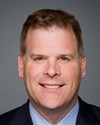He said he wouldn't miss it, for the record.
He wishes Deepak was here; don't we all. Deepak is representing the Government of Canada at a very important meeting abroad.
The G-8 legacy fund helped an already beautiful part of Canada put its best face forward to the world. There were going to be literally 4,000 members of the media beaming pictures of this summit and the Muskoka region to every corner of the globe in blanket coverage. There were also thousands of delegates, thousands of diplomats, who would share their own impressions by word of mouth. Some stayed up to 100 kilometres away from the summit site. This was a huge opportunity. This was a huge undertaking.
Large international summits like this generally require significant infrastructure investments. Our government in February 2009 announced this fund to Canadians. Up to $50 million was available.
Ultimately, my office and departmental officials presented me with a list of public infrastructure projects that I approved. These 32 projects met the criteria of the program. These included the effective and secure hosting of the G-8, beautification of the region, and a lasting legacy for local communities.
As minister, I presented estimates to Parliament, and I am accountable for those estimates. When I arrived at the department, I was hearing concern from all sides that federal infrastructure approvals were taking far too long. They were mired in red tape. My mission was to get things moving, and, with this fund, time was of the essence.
The Building Canada fund was a seven-year program. Stimulus programs ran for two. With G-8 projects, though, we had approximately 15 months from start to finish.
Officials recommended, and I as minister accepted that advice, that we use an existing fund rather than create an entirely new one so that we could move quickly. The border infrastructure fund was topped up.
I am pleased to say that the 32 projects were delivered on time and millions under budget.
I would like to underline one point. I said the border infrastructure fund was an existing fund that was topped up. In other words, money that was designed for border infrastructure was not diverted from improvements to border security or mobility. It was merely a delivery mechanism.
The projects came in under budget, every penny was accounted for, and each of the projects continues to serve the public as it was intended. I'm told that this has been done in terms of parliamentary appropriations for more than 100 years.
I would also reiterate, Mr. Chair, the buck stops with me. The projects presented to me met all of the eligibility criteria for the program. I made the decisions, I am responsible, and I am accountable.
Let me also say that public servants at Infrastructure Canada did an absolutely outstanding job when the Canadian economy needed the federal government the most. They applied professional oversight and expertise to the thousands of project applications to help create jobs, hope, and opportunity at a time of global recession.
If our government had not acted to create more than 23,000 stimulus projects across the country, the great global recession may well have had great depression effects.
The Auditor General in her report made a number of observations about ways to be more open and more accountable to Canadians. I fully accept those comments, and the government agrees.
In hindsight, the estimates could have included a line regarding the top-up of this fund. I stand by my decisions, which were informed by the best possible advice. I was and remain accountable.
I'm open to providing responses to questions over the areas with which I was responsible.
Thank you.

